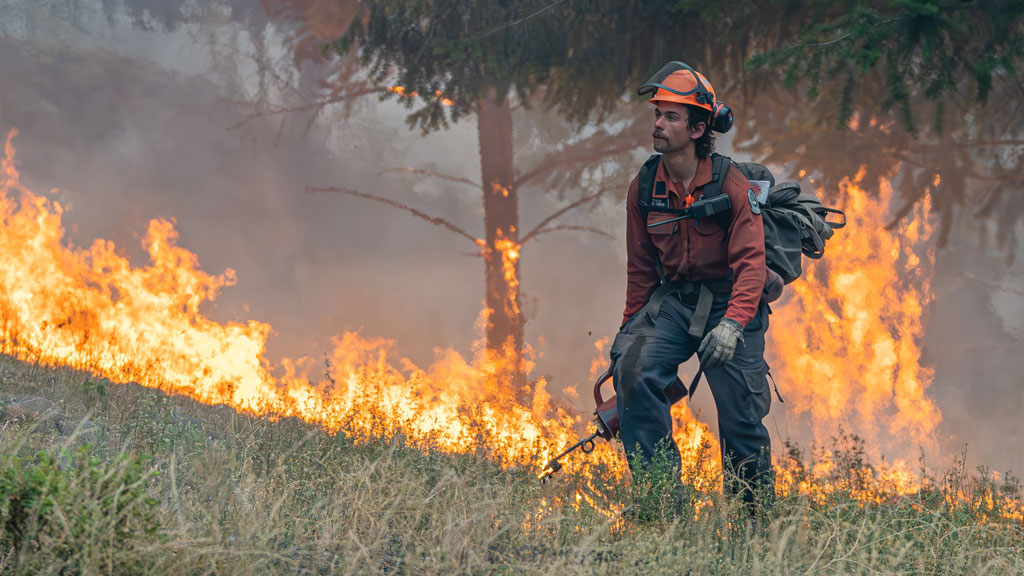While wildfires have forced many in British Columbia’s southern interior to evacuate this summer, the province’s construction industry is stepping up.
“Our members are in highway maintenance, which is all four corners of the province. They’re on standby for emergency relief, ensuring the roads are clear and looking after public safety is first and foremost for them and that continues today,” said BC Roadbuilders and Heavy Construction Association president Kelly Scott.
He added some projects had to be shut down due to the wildfires since they involved paving or using heat sources as well as to ensure worker safety.
“Working in that environment is not good for them, but also there’s the effect of working on a roadside where it’s fairly smoky and the public are trying to drive by. It just doesn’t make sense for anybody,” Scott said. “So to keep the public and our workers safe, those (Okanagan) projects have been put on hold as subject to the emergency orders.”
British Columbia Construction Association (BCCA) president Chris Atchison said member organizations, especially the Southern Interior Construction Association (SICA), are pitching in to help with the fires and the aftermath.
“Many of the (SICA) members and staff have been subject to the evacuation orders and so this is happening in real time for them. Not only are they trying to mobilize and be as supportive as they can on behalf of the industry, they’re heeding the orders from response teams. Above it all they have a whatever they can do, ‘let’s get it done’ attitude, whether it’s loaning equipment, repurposing staff, going where they need to go,” Atchison said.
Scott said his members are able to loan construction equipment and other gear to the firefighting effort.
“’What do you need and where do you need it?’ is the resounding question,” he said. “The government knows what we have when they need dozers or excavators. They’re available whenever they ask for it.”
After the fires die down, surveying the damage and rebuilding involves not only destroyed structures but stress and strain on transport corridors in and out of affected areas.
“You have abnormally heavy equipment moving along these roads to help suppress the fire and look after the public, and so the Ministry of Transportation and geotech people will be out doing a significant investigation of those roads in impacted areas and then determining how we rehabilitate those roads back to the level they were at, which is ongoing,” Scott said.
Atchison echoed that the B.C. construction industry will step up when it is given the go-ahead to go into affected areas, assess the damage and begin rebuilding.
“SICA has indicated when they are cleared to go in and assess what needs to be done they will be prioritizing the buildings in support of their community. Those buildings that are most in need of being built are at the forefront of what needs to be done and maybe relegating those other items that are already in the queue but aren’t quite as urgent as what needs to be rebuilt in the area,” he said.
Atchison said not only are the fires an immediate tragedy but they strike at the root of an ongoing housing crisis.
“Any home that’s taken away just seems like it’s putting us a step backwards in that very important provincial, and if not national, mandate to make sure people have places to live,” he said. “It’s a tremendous sadness for all of us when we see this encroaching upon something that we all know is a pressing issue for our province.”
Follow the author on Twitter @JOCFrey.











Recent Comments